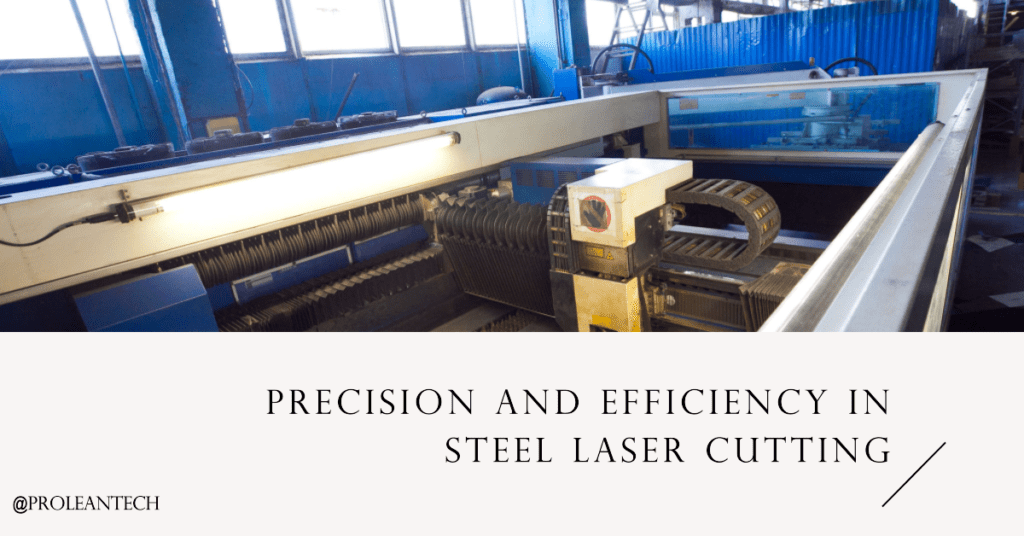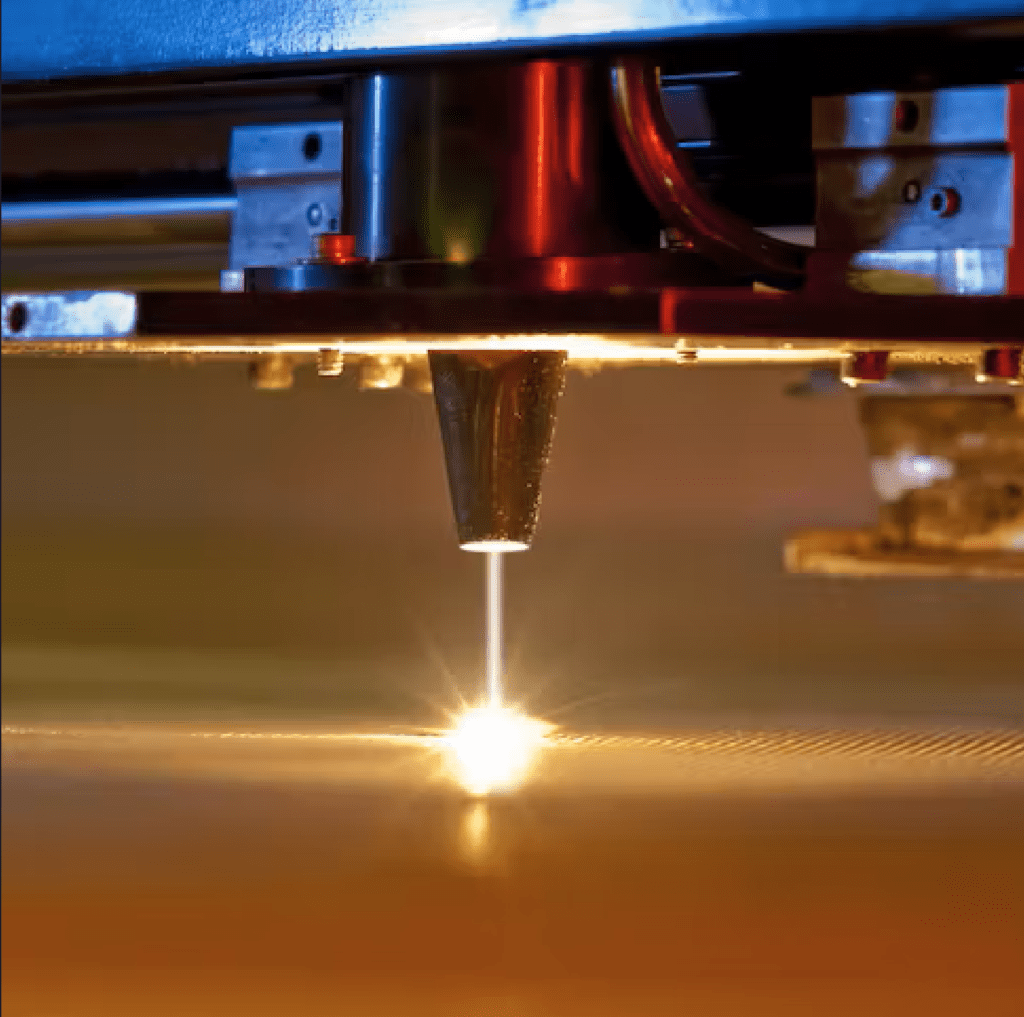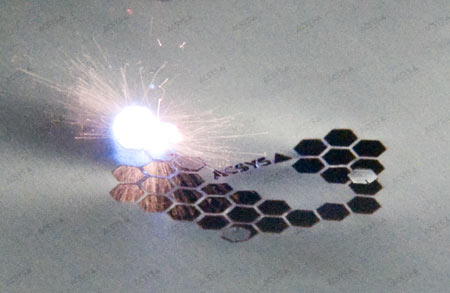
In the manufacturing industry, the need for precision, efficiency, and quality control has given rise to a plethora of innovative technologies. Among these, laser cut CNC stands out due to its exceptional precision, high speed, and versatility. From producing intricate designs to handling large-scale production of steel parts, this technique has redefined the parameters of cutting operations.
This comprehensive guide will take you through the ins and outs of steel laser cutting, exploring its process, benefits, and applications, with a focus on Prolean’s CNC Laser-cutting services.
The Science Behind Laser Cutting
Laser cutting, as a widely utilized manufacturing technique, operates on a fascinating science principle. The process uses a focused high-power laser beam to heat the steel to a temperature high enough to melt or vaporize, creating a precise cut. The fundamental science behind laser cutting encompasses photonics, thermodynamics, and materials science. It typically falls into three primary methods: fusion cutting, flame cutting, and remote cutting. Let’s delve deeper into these techniques:
1. Fusion Cutting

Fusion cutting, also known as melt and blow, is a laser cutting method that leverages high-pressure inert gases—typically nitrogen—to blow molten material away from the cut. In this process, the laser beam is concentrated on the steel, heating it until it melts. The molten material is then expelled by the gas jet, resulting in a cut.
Key aspects of fusion cutting are:
- It’s mainly used for laser cutting materials like stainless steel and aluminum.
- Fusion cutting offers high-quality cut edges with minimal oxidation.
2. Flame Cutting

Flame cutting, also referred to as reactive cutting or oxygen cutting uses oxygen as the cutting gas. Unlike fusion cutting, the oxygen used in this process reacts with the laser heat, creating an exothermic reaction that significantly increases the energy delivered to the workpiece. This additional energy allows for faster cutting speeds and thicker cutting abilities.
Key aspects of flame cutting are:
- It’s most commonly used for cutting carbon steel.
- Flame cutting results in an oxide layer on the cut edge, which may require additional processing to remove.
3. Remote Cutting

Remote cutting employs a pulsed laser beam to remove material without the need for a cutting gas. The laser pulse’s high intensity vaporizes the material instantly, enabling fast cutting speeds, particularly for thin materials.
Key aspects of remote cutting are:
- It’s typically used for thin sheet materials.
- Remote cutting is a high-speed process with fast feed rates and high productivity.
Here’s a tabular comparison of the three methods:
| Method | Cutting Gas | Best for | Cut Quality |
|---|---|---|---|
| Fusion Cutting | Nitrogen | Stainless Steel | High, no oxidation |
| Flame Cutting | Oxygen | Carbon Steel | Oxide layer |
| Remote Cutting | None | Thin sheet materials | High-speed, high productivity |
Benefits of Steel Laser Cutting
Steel laser cutting, as an advanced manufacturing technique, brings multiple benefits to the table. From precision and speed to quality and efficiency, the laser cutting advantages are manifold. Below, we detail these benefits:
| Benefit | Description | Example |
|---|---|---|
| High Precision | Steel laser cutting operates with extremely high precision, down to the smallest measurements. | Creation of intricate designs, patterns, and shapes that might be challenging with traditional cutting techniques |
| Versatility | Laser cutting shines in its ability to handle a wide variety of shapes and sizes, regardless of the complexity. | Cutting thick steel plates or thin steel sheets |
| Speed | Compared to other sheet metal cutting methods, laser cutting significantly improves the speed of operation. | Shorter lead times and improved productivity |
| Quality | Laser cutting creates clean, smooth, and high-quality cut edges. | Reduces the need for further finishing processes, saving time and resources |
| Efficiency | As an automated process controlled by CNC machines, laser cutting reduces labor costs, decreases the risk of errors, and increases overall productivity. | Saves the time and cost without compromising the precision. |
Considerations When Implementing Steel Laser Cutting
When implementing steel laser cutting into your manufacturing process, it’s crucial to consider several factors to ensure optimal results. The implementation requires technical expertise, careful consideration of machine specifications, and an understanding of material properties. Here are a few key considerations:
1. Material Thickness
The thickness of the material you intend to cut significantly influences the type and power of the laser you’ll need. Thicker materials require more powerful lasers to achieve clean, precise cuts. It’s essential to match your machine capabilities with your material requirements.
2. Material Type
The type of steel you’re working with—whether it’s stainless steel, carbon steel, or alloy steel—can affect the laser cutting process. Different steels have different physical properties, which can impact how they react to the laser’s heat. It’s crucial to adjust your process parameters to suit the specific type of steel you’re cutting.
3. Machine Specifications
Not all laser cutting machines are created equal. Different machines have different capabilities, including power levels, cutting speeds, and precision levels. It’s essential to choose a machine that suits your specific requirements.
Here’s a bulleted list outlining these considerations:
- Material Thickness: Match your machine capabilities with your material requirements.
- Material Type: Adjust your process parameters to suit the specific type of steel.
- Machine Specifications: Choose a machine that fits your specific requirements.
Understanding the Safety Aspects of Steel Laser Cutting
Laser cutting, while advantageous in many ways, also carries potential safety risks that must be addressed to ensure a secure work environment. Some of the main safety concerns in laser cutting are shown in tabular form below;
| Safety Concern | Description | Precautions |
|---|---|---|
| Eye Protection | The intense light produced by a laser cutter can cause severe eye damage if proper protection isn’t worn. | Laser safety glasses or goggles should always be used when operating or even observing a laser cutter in action. |
| Fume Extraction | Laser cutting can produce hazardous fumes and particles that are harmful if inhaled. | Good ventilation or fume extraction systems are a must-have in any environment where laser cutting is performed. |
| Fire Safety | The high temperatures produced by laser cutting can pose a fire risk, especially when working with flammable materials. | Fire safety measures should be in place, including having a fire extinguisher nearby and ensuring that the laser cutter is never left unattended while operating. |
The Role of Steel Laser Cutting in Today’s Industry
Steel laser cutting plays a significant role in today’s manufacturing industry. Its speed, precision, and versatility make it ideal for various applications, from automotive to aerospace, construction, and beyond. Here is a brief elaboration of laser cutting applications;
- Automotive Industry
In the automotive industry, laser cutting is used to create complex parts with high precision. This technology allows for more intricate designs, faster production times, and greater consistency between parts.
- Aerospace Industry
In the aerospace industry, the high precision and quality of laser cutting sheets is crucial for manufacturing parts that meet strict safety and performance standards. Laser cutting allows for the production of lightweight parts, which can significantly improve fuel efficiency.
- Construction Industry
In the construction industry, laser cutting is used to cut structural steel for buildings, bridges, and other structures. The speed and precision of laser cutting allow for quicker construction times and more structurally sound buildings.
The Future of Steel Laser Cutting
Laser-cutting technology continues to evolve, with advancements aimed at improving speed, precision, and efficiency. Looking forward, several trends are set to define the future of steel laser cutting.
- Fiber Lasers
Fiber lasers are becoming more popular in the manufacturing industry due to their high efficiency, superior beam quality, and lower operating costs compared to CO2 lasers. This technology is particularly effective for cutting thin to medium-thickness steel and is expected to become increasingly prevalent.
- Automation and Robotics
Automation and robotics are playing a larger role in laser cutting. Robotic arms can operate laser cutters with incredible precision, and automation technologies can streamline the cutting process, reducing the need for human intervention and potential for error.
- Green Manufacturing
As environmental sustainability becomes increasingly important, green manufacturing practices will become more prevalent in the laser cutting industry. This could involve using more energy-efficient lasers, recycling the waste produced during the cutting process, or implementing cleaner technologies.
Conclusion
Steel laser cutting is an essential tool in modern manufacturing, providing high precision, speed, and versatility. The technology continues to evolve, with advancements such as fiber lasers, automation, and green manufacturing practices set to shape the future of the industry. It’s clear that understanding and implementing this technology effectively can offer significant benefits to manufacturers.
Prolean’s CNC Laser-cutting Services are at the forefront of this technological wave, offering cutting-edge steel laser-cutting solutions that can help businesses streamline their manufacturing processes, improve product quality, and achieve greater efficiency.
FAQs
How does steel laser cutting work?
Steel laser cutting works by focusing a high-power laser beam on the steel surface. The intense heat of the laser melts or vaporizes the steel, leaving a precise cut.
What are the benefits of steel laser cutting?
Some of the primary benefits of steel laser cutting include high precision, speed, versatility, and the ability to cut complex shapes without the need for tooling.
What safety measures should be taken when operating a laser cutter?
Key safety measures include using eye protection, ensuring good ventilation or fume extraction, and implementing fire safety measures such as having a fire extinguisher nearby.
What factors should be considered when implementing steel laser cutting?
It’s crucial to consider the thickness and type of steel, the specifications of the laser cutting machine, and safety considerations when implementing steel laser cutting.
What trends are shaping the future of steel laser cutting?
Key trends include the rise of fiber lasers, the increased use of automation and robotics, and a growing emphasis on green manufacturing practices.




Your article helped me a lot regarding understanding of steel properties and laser compatibility , is there any more related content? Thanks!
Hey, twoezenie. This article might be helpful for you for further understanding: https://proleantech.com/laser-cutting-details/ Thank you!